
How to Use ACS712 AC Current Sensor: Examples, Pinouts, and Specs
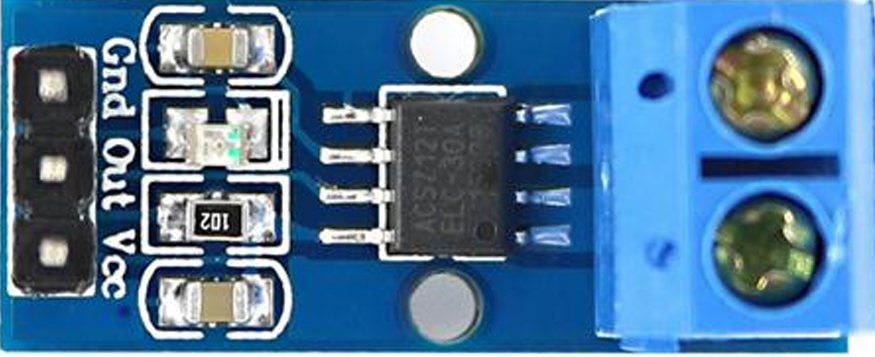
 Design with ACS712 AC Current Sensor in Cirkit Designer
Design with ACS712 AC Current Sensor in Cirkit DesignerIntroduction
The ACS712 is a Hall effect-based linear current sensor designed to measure both AC and DC currents. It provides an analog voltage output proportional to the current flowing through the sensor. The device is compact, easy to use, and highly accurate, making it ideal for a wide range of applications.
Explore Projects Built with ACS712 AC Current Sensor
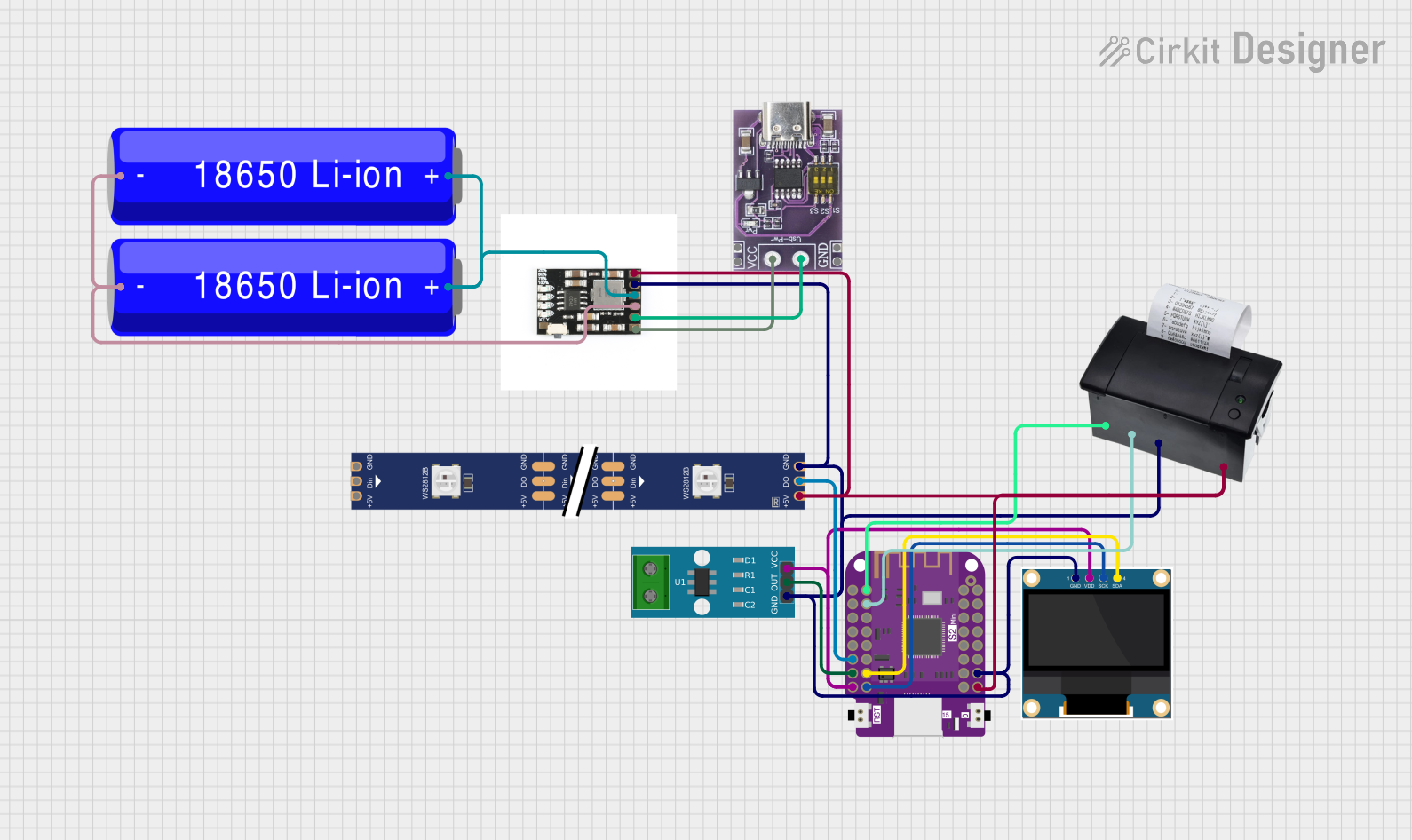
 Open Project in Cirkit Designer
Open Project in Cirkit Designer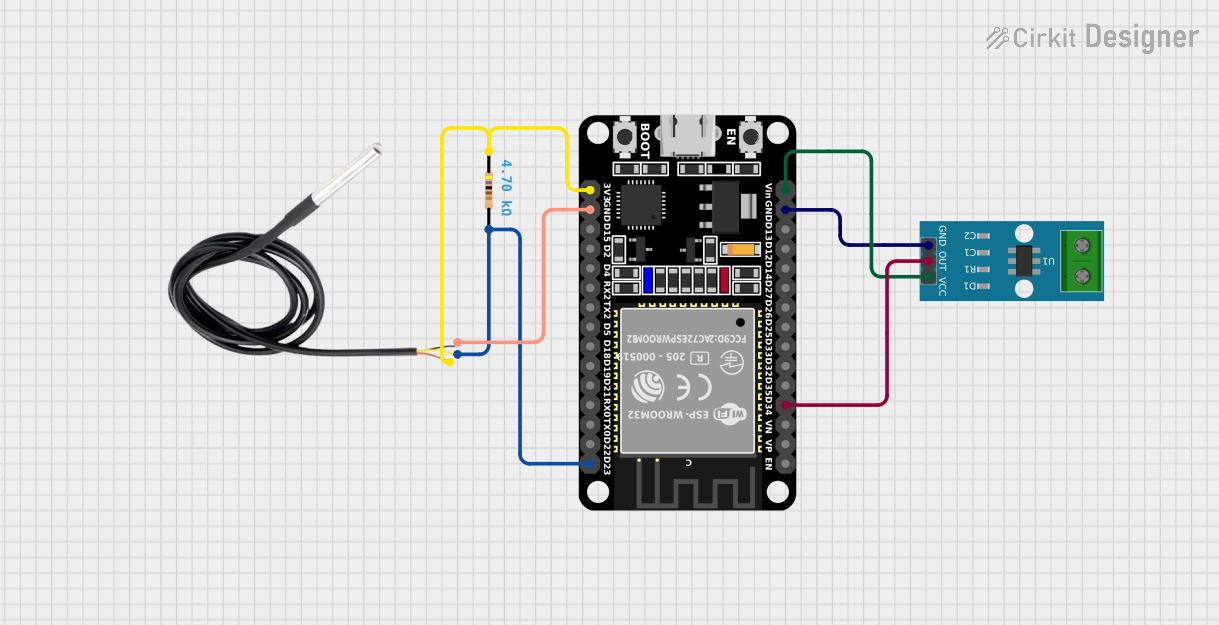
 Open Project in Cirkit Designer
Open Project in Cirkit Designer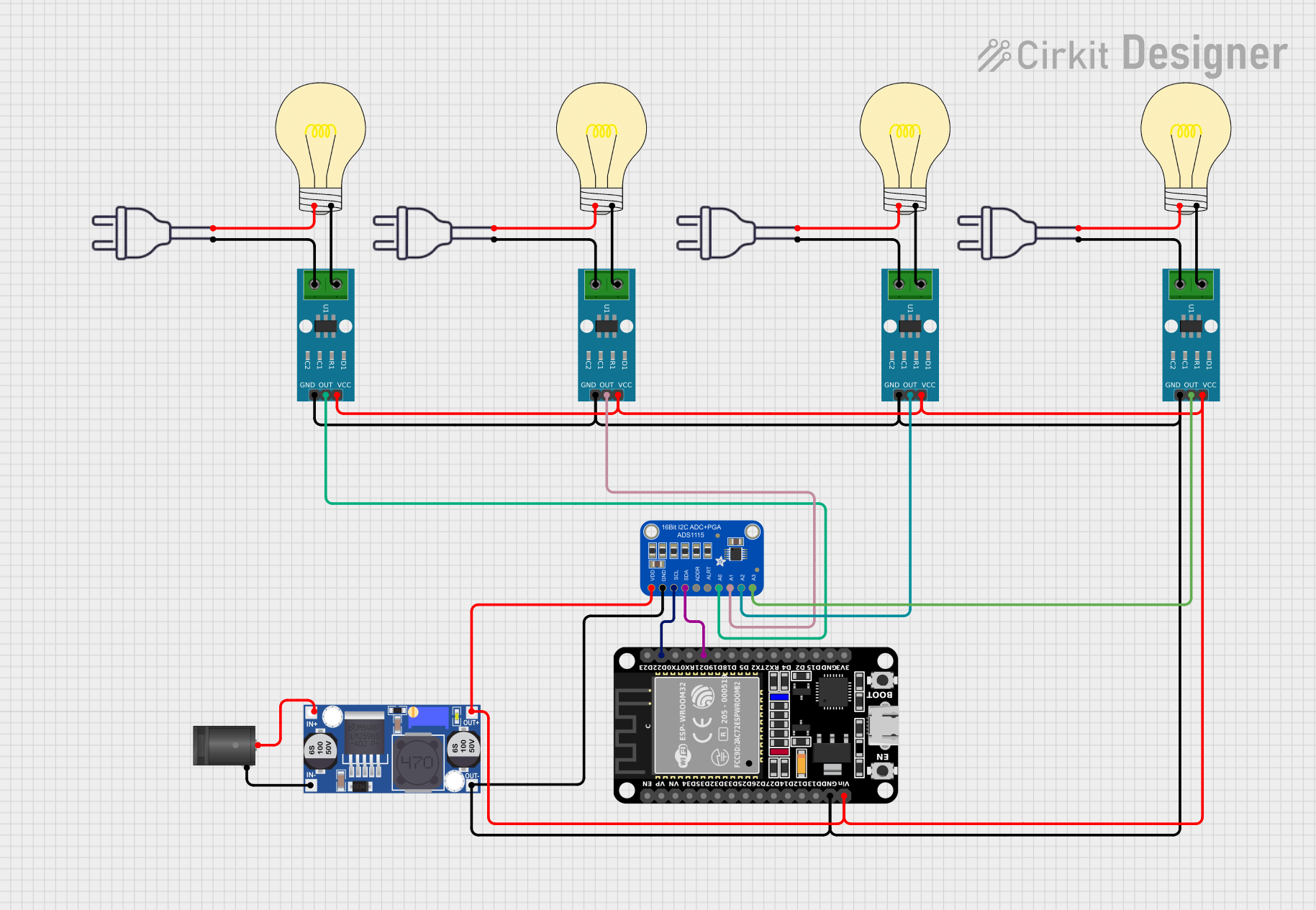
 Open Project in Cirkit Designer
Open Project in Cirkit Designer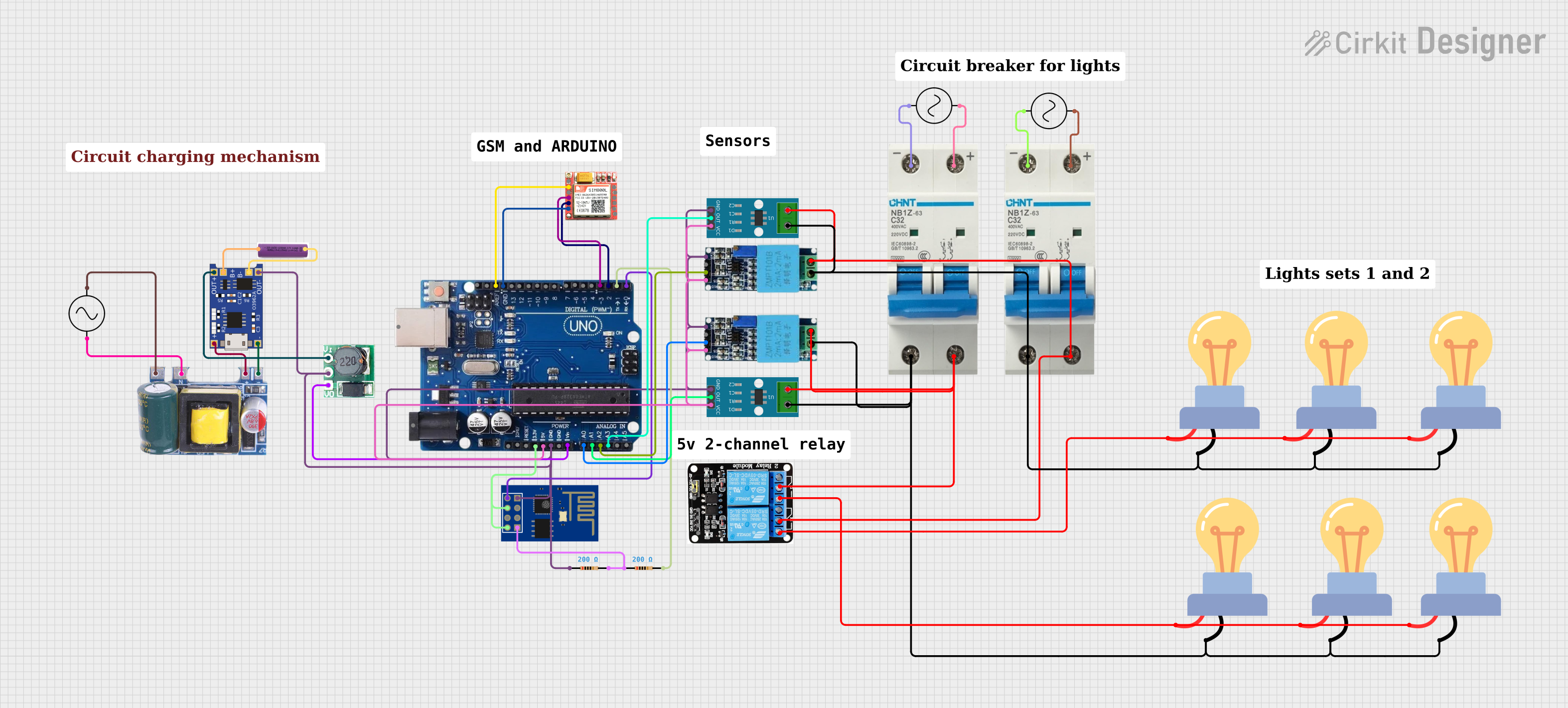
 Open Project in Cirkit Designer
Open Project in Cirkit DesignerExplore Projects Built with ACS712 AC Current Sensor

 Open Project in Cirkit Designer
Open Project in Cirkit Designer
 Open Project in Cirkit Designer
Open Project in Cirkit Designer
 Open Project in Cirkit Designer
Open Project in Cirkit Designer
 Open Project in Cirkit Designer
Open Project in Cirkit DesignerCommon Applications and Use Cases
- Power monitoring in household appliances
- Energy management systems
- Overcurrent protection in circuits
- Motor control and monitoring
- Battery management systems
- Solar power systems
Technical Specifications
The ACS712 is available in different variants based on the current range: 5A, 20A, and 30A. Below are the key technical details:
| Parameter | Value |
|---|---|
| Supply Voltage (Vcc) | 4.5V to 5.5V |
| Current Measurement Range | ±5A, ±20A, or ±30A (depending on model) |
| Sensitivity | 185 mV/A (5A), 100 mV/A (20A), 66 mV/A (30A) |
| Output Voltage | 2.5V at 0A (midpoint) |
| Response Time | 5 µs |
| Accuracy | ±1.5% |
| Operating Temperature | -40°C to 85°C |
Pin Configuration and Descriptions
The ACS712 is typically available in an 8-pin SOIC package. Below is the pinout:
| Pin Number | Pin Name | Description |
|---|---|---|
| 1, 2, 3 | IP+ | Current input pin (positive terminal) |
| 4 | GND | Ground pin |
| 5 | VIOUT | Analog voltage output proportional to current |
| 6 | FILTER | External capacitor connection for noise filtering |
| 7, 8 | IP- | Current input pin (negative terminal) |
Usage Instructions
How to Use the ACS712 in a Circuit
- Power the Sensor: Connect the Vcc pin to a 5V power supply and the GND pin to ground.
- Connect the Current Path: Pass the current-carrying wire through the IP+ and IP- pins. Ensure the current does not exceed the sensor's rated range.
- Read the Output: The VIOUT pin provides an analog voltage proportional to the current. At 0A, the output voltage is approximately 2.5V. For positive currents, the voltage increases, and for negative currents, it decreases.
- Filter Noise: Connect a capacitor (e.g., 0.1 µF) between the FILTER pin and ground to reduce noise in the output signal.
Important Considerations and Best Practices
- Current Direction: Ensure the current flows in the correct direction through the IP+ and IP- pins for accurate readings.
- Calibration: Perform calibration to account for sensor tolerances and improve accuracy.
- Avoid Overcurrent: Do not exceed the sensor's maximum current rating to prevent damage.
- Noise Reduction: Use a proper filtering capacitor to minimize noise in the output signal.
- Isolation: The ACS712 provides electrical isolation between the current-carrying conductor and the output signal, making it safe for high-voltage applications.
Example: Using ACS712 with Arduino UNO
Below is an example of how to use the ACS712 with an Arduino UNO to measure AC current:
// Include necessary libraries
const int sensorPin = A0; // Connect VIOUT to Arduino analog pin A0
const float sensitivity = 185.0; // Sensitivity in mV/A for ACS712-05B
const float VREF = 2.5; // Reference voltage at 0A (midpoint)
void setup() {
Serial.begin(9600); // Initialize serial communication
}
void loop() {
int sensorValue = analogRead(sensorPin); // Read analog value from sensor
float voltage = (sensorValue / 1023.0) * 5.0; // Convert to voltage
float current = (voltage - VREF) * 1000 / sensitivity;
// Convert voltage to current in Amperes
Serial.print("Current: ");
Serial.print(current, 3); // Print current with 3 decimal places
Serial.println(" A");
delay(1000); // Wait for 1 second before next reading
}
Troubleshooting and FAQs
Common Issues and Solutions
No Output or Incorrect Readings:
- Ensure the sensor is powered correctly (5V to Vcc and GND to ground).
- Verify that the current-carrying wire is properly connected to the IP+ and IP- pins.
- Check for loose or faulty connections in the circuit.
High Noise in Output Signal:
- Add a filtering capacitor (e.g., 0.1 µF) between the FILTER pin and ground.
- Use shielded cables to reduce electromagnetic interference.
Output Voltage Stuck at 2.5V:
- Ensure there is current flowing through the sensor.
- Verify that the current is within the sensor's measurement range.
Inaccurate Measurements:
- Perform calibration to account for sensor tolerances.
- Use a stable and accurate 5V power supply for the sensor.
FAQs
Q: Can the ACS712 measure DC current?
A: Yes, the ACS712 can measure both AC and DC currents.
Q: How do I choose the correct ACS712 variant?
A: Select the variant based on the maximum current you need to measure. For example, use the 5A version for currents up to ±5A.
Q: What happens if I exceed the sensor's current rating?
A: Exceeding the current rating may damage the sensor or result in inaccurate readings. Always stay within the specified range.
Q: Can I use the ACS712 with a 3.3V microcontroller?
A: The ACS712 requires a 5V power supply, but its output can be read by a 3.3V microcontroller if the analog input pin supports 5V-tolerant signals.
Q: Is the ACS712 suitable for high-frequency AC signals?
A: The ACS712 has a bandwidth of approximately 80 kHz, making it suitable for most low- to medium-frequency AC signals.